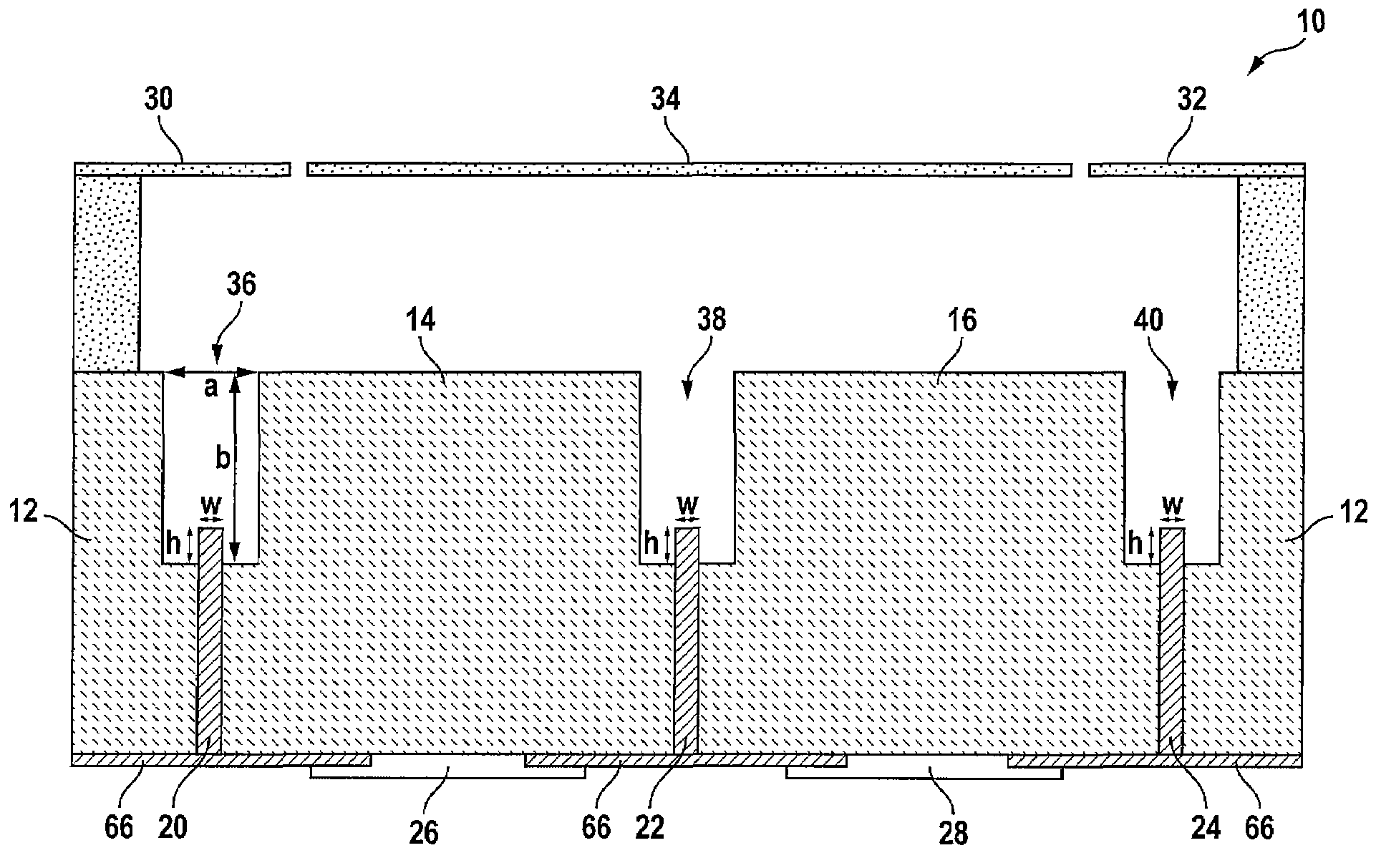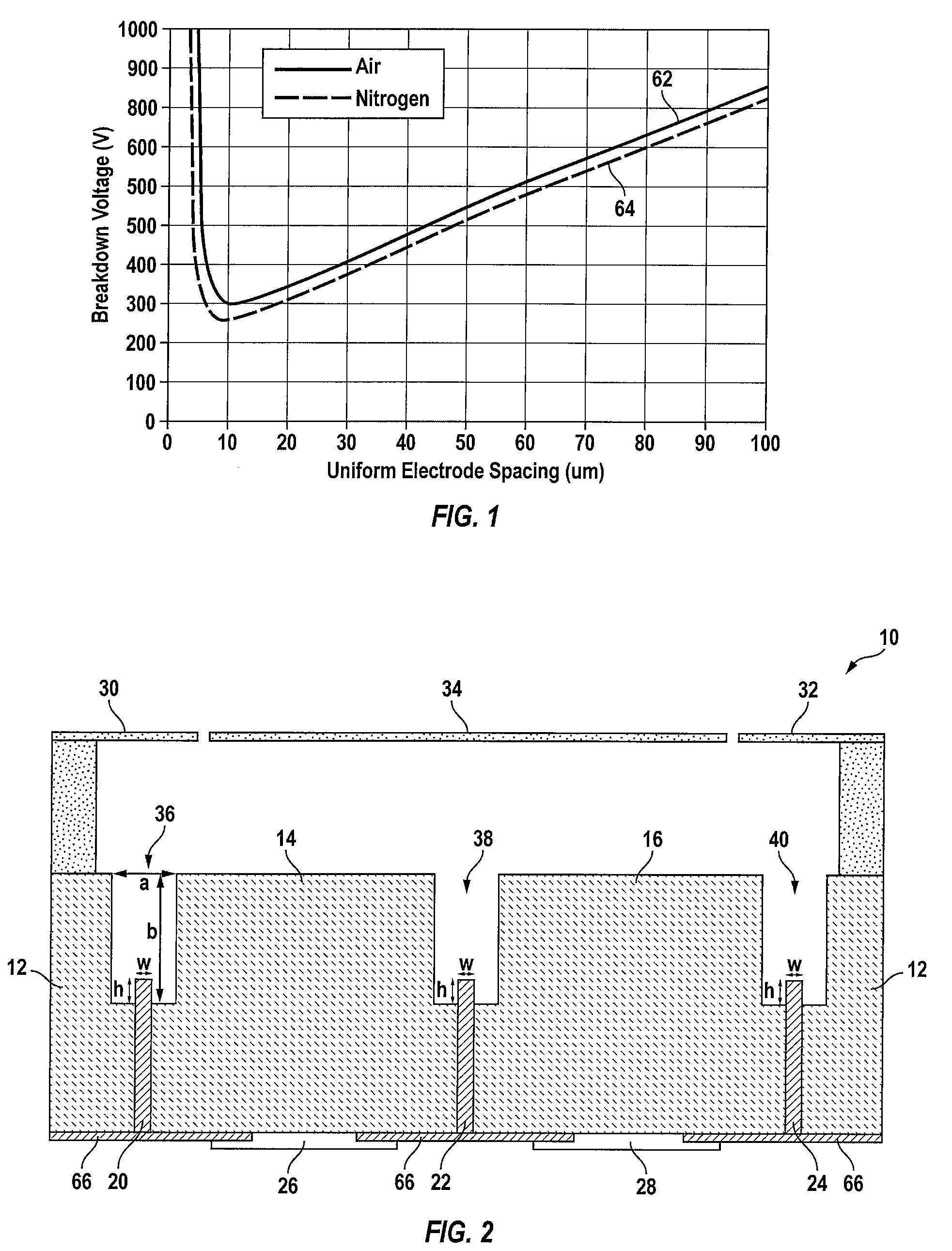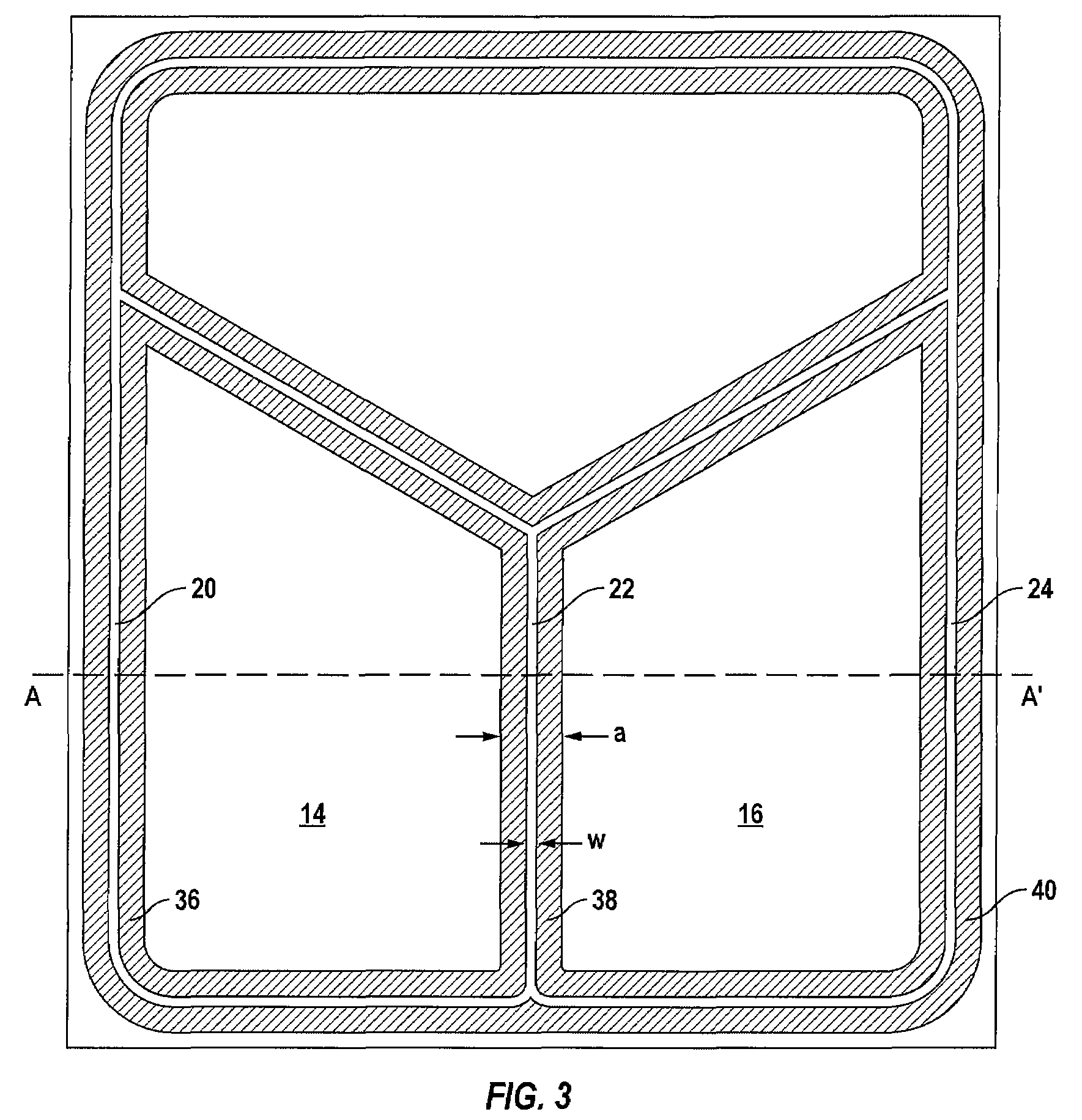Charging guard with paschen stacking
a charging guard and paschen technology, applied in the field of microelectro mechanical system devices, can solve the problems of severe physical damage to any surface exposed, breakdown of any surface along the surface, and limited maximum voltage that can be applied, so as to reduce exposure to uncontrolled surface potentials, avoid voltage drift, and apply high voltage
- Summary
- Abstract
- Description
- Claims
- Application Information
AI Technical Summary
Benefits of technology
Problems solved by technology
Method used
Image
Examples
Embodiment Construction
[0018]FIG. 2 is a cross-sectional view of a MEMS-based mirror 10, in accordance with one embodiment of the present invention. As described below, MEMS-based mirror 10 is adapted to withstand relatively high applied voltages, and has a substantially reduced exposure to uncontrolled surface potentials, thereby avoiding voltage drifts and mirror position instability.
[0019]As seen from FIG. 2, electrodes 14 and 16 are electrically isolated from the rest of the substrate via insulators 20 and 24 and electrically isolated from one another via insulator 22. In the exemplary embodiment 10 of the MEMS-based mirror, the electrodes as well as supporting structures 30, 32 that support mirror 34 are formed using silicon and thus have matching thermal expansion coefficient to the electrodes and base material. In such embodiments, insulating layers 20, 22 and 24 may be formed using silicon dioxide. Metal pads 26 and 28 are used to apply voltages to electrodes 14 and 16. Although not shown, it is u...
PUM
| Property | Measurement | Unit |
|---|---|---|
| breakdown voltage | aaaaa | aaaaa |
| voltage | aaaaa | aaaaa |
| width | aaaaa | aaaaa |
Abstract
Description
Claims
Application Information
 Login to View More
Login to View More - R&D
- Intellectual Property
- Life Sciences
- Materials
- Tech Scout
- Unparalleled Data Quality
- Higher Quality Content
- 60% Fewer Hallucinations
Browse by: Latest US Patents, China's latest patents, Technical Efficacy Thesaurus, Application Domain, Technology Topic, Popular Technical Reports.
© 2025 PatSnap. All rights reserved.Legal|Privacy policy|Modern Slavery Act Transparency Statement|Sitemap|About US| Contact US: help@patsnap.com



